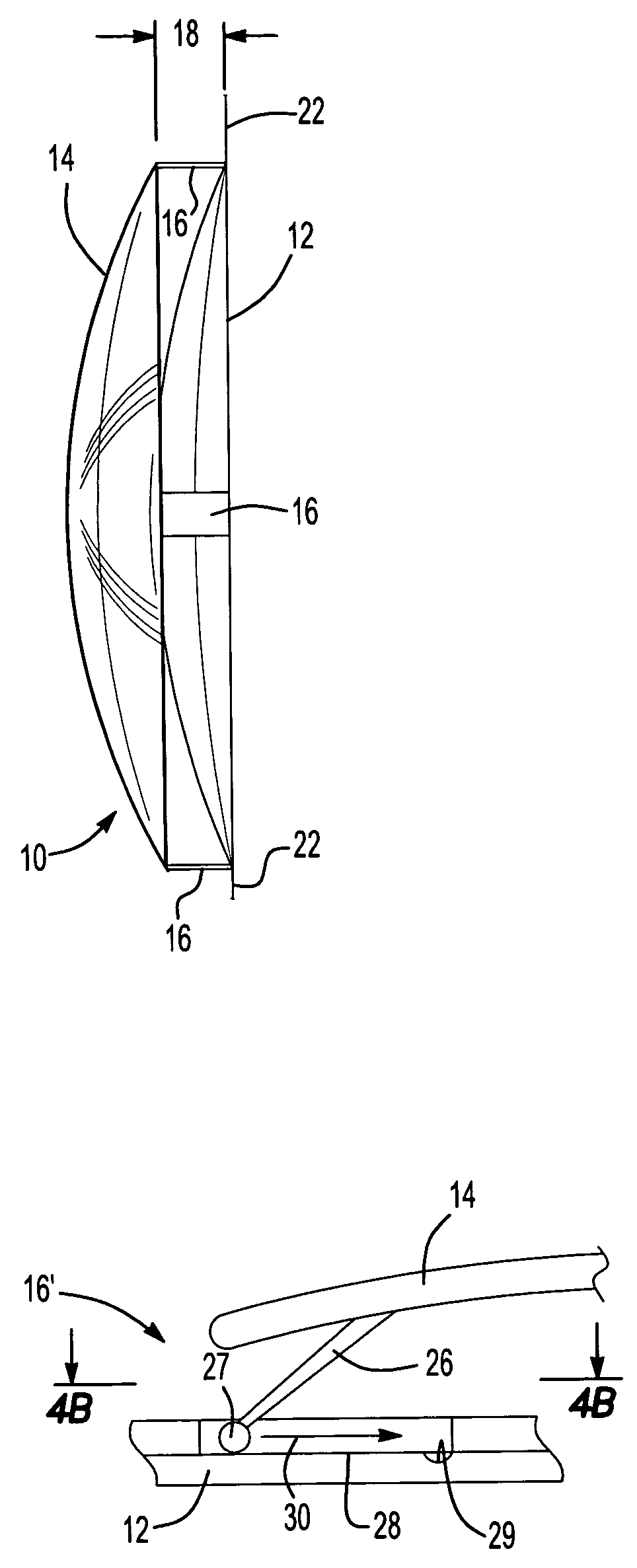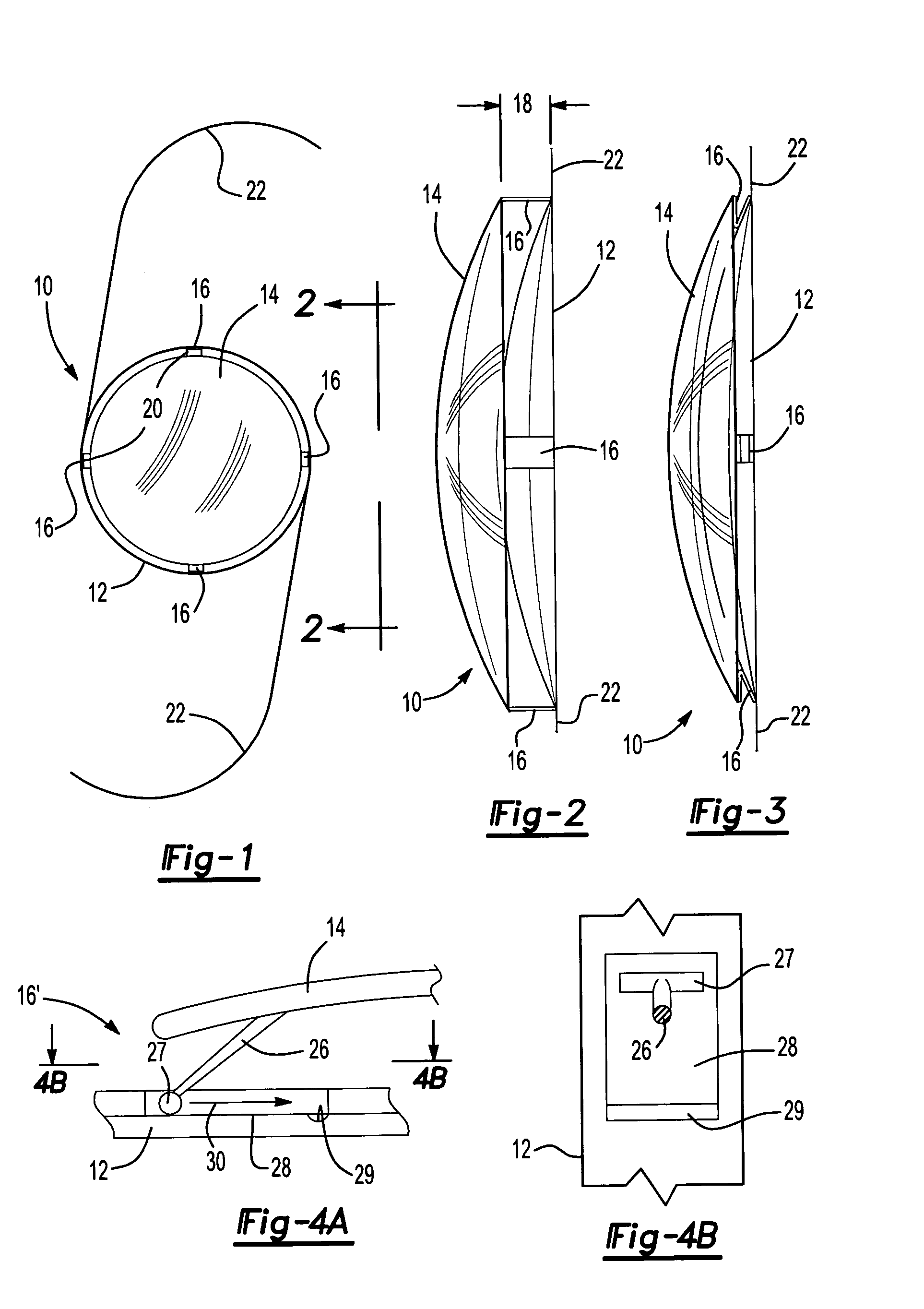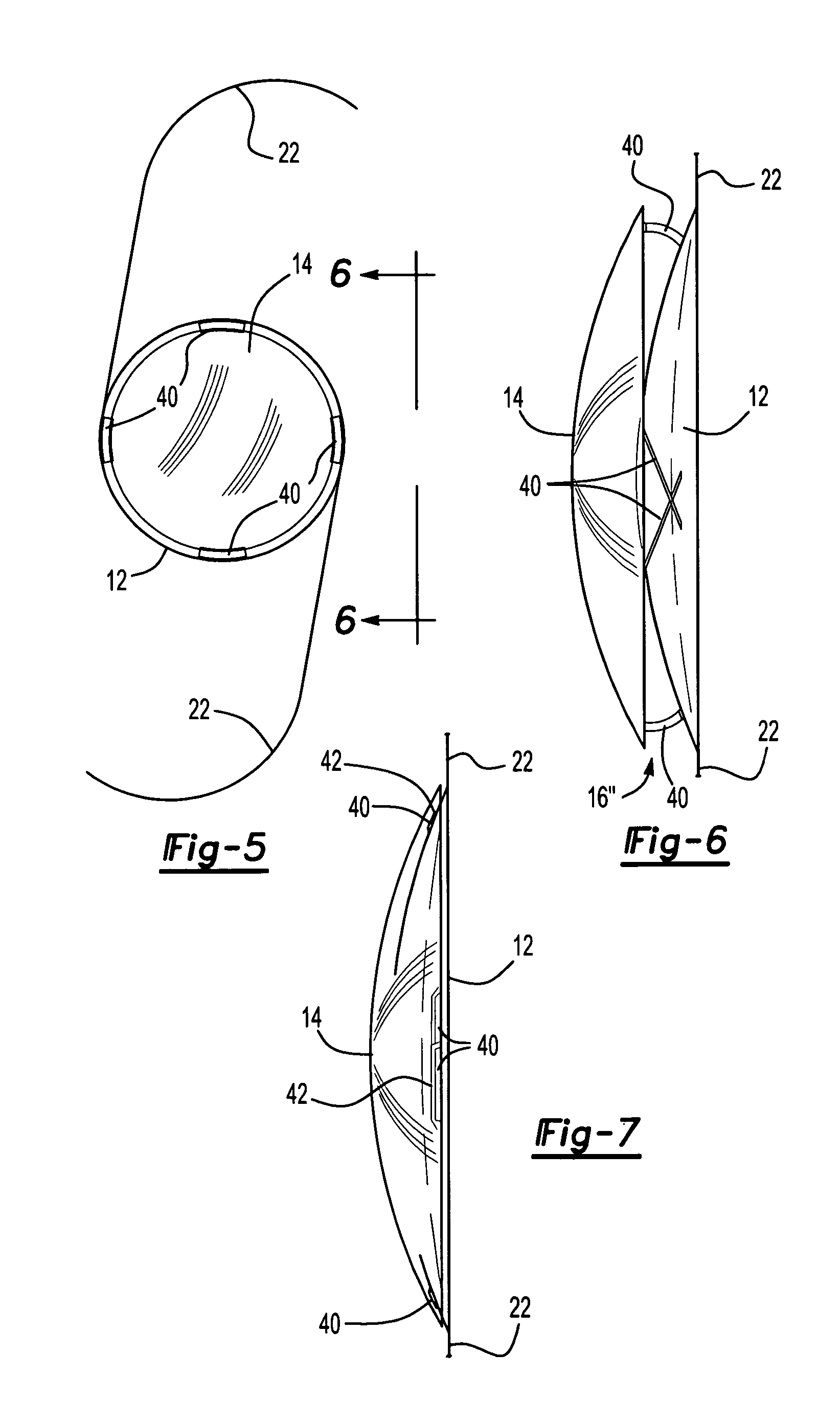Posterior chamber lens implant
a lens implant and anterior chamber technology, applied in the field of posterior chamber lens implants, can solve the problems of poor glare resistance of lenses, only restoring far vision for patients, and posterior chamber lens implants not restoring the type of near vision needed
- Summary
- Abstract
- Description
- Claims
- Application Information
AI Technical Summary
Benefits of technology
Problems solved by technology
Method used
Image
Examples
Embodiment Construction
[0025]With reference first to FIGS. 1 and 2, a first preferred embodiment of the posterior chamber lens implant 10 of the present invention is shown and comprises a first lens 12 and a second lens 14. Both lenses 12 and 14 are generally circular in shape as best shown in FIG. 1, with the second lens 14 having either the same or a somewhat smaller diameter than the first lens 12.
[0026]The first lens has a refractive power that is greater than the refractive power of the second lens 14. Preferably, the first lens 12 has a refractive power in the range of 15–25 diopters while the second lens 14 has a refractive power in the range of 0.1–10 diopters.
[0027]The lenses 12 and 14 may be constructed of any conventional material such a silicone, acrylic, PMMA and the like. Furthermore, even though the lenses 12 and 14 may be constructed of a flexible material to facilitate their insertion into the posterior chamber during surgery, once the lens implant 10 is positioned within the posterior ch...
PUM
 Login to View More
Login to View More Abstract
Description
Claims
Application Information
 Login to View More
Login to View More - R&D
- Intellectual Property
- Life Sciences
- Materials
- Tech Scout
- Unparalleled Data Quality
- Higher Quality Content
- 60% Fewer Hallucinations
Browse by: Latest US Patents, China's latest patents, Technical Efficacy Thesaurus, Application Domain, Technology Topic, Popular Technical Reports.
© 2025 PatSnap. All rights reserved.Legal|Privacy policy|Modern Slavery Act Transparency Statement|Sitemap|About US| Contact US: help@patsnap.com



